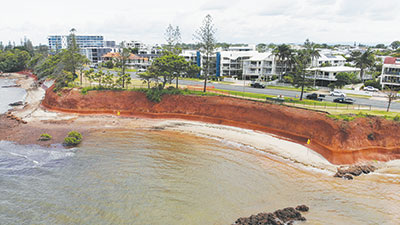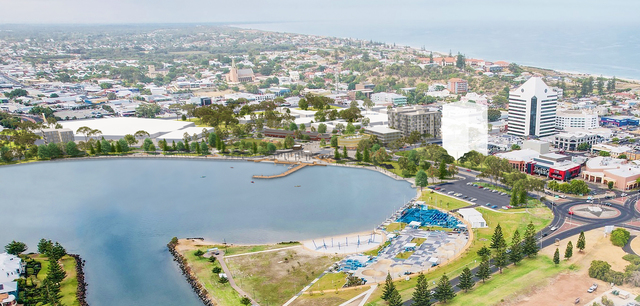The red cliffs that literally gave the Redcliffe Peninsula, Queensland, its name have been saved from coastal erosion thanks to an ingenious design conceived by a team that usually works beneath the surface.
Moreton Bay Regional Council Mayor, Peter Flannery, said it had been a challenging project from the outset, but the results speak for themselves.
“Due to a range of habitat and Marine Parks constraints a conventional rock armour revetment solution wasn’t supported at this location, which led to the development of an alternative solution for the unique site conditions.
“We also had to get creative to ensure the colour of the red cliffs was just right.
“A ‘lower cliff hardening’ solution was developed. This comprised a shotcrete wall, reinforced with glass-fibre reinforced polymer and soil-nailed to the existing cliff.
“The surface of the wall was coloured and textured to closely resemble the natural form and aesthetic of the existing lower cliff.
“To improve the upper cliff stability, improve safety and retain the iconic cliff aesthetic, additional ‘upper cliff stabilisation’ works were also developed.
“These comprised removal of unstable vegetation, reprofiling of the upper cliff face, and the application of a polymer soil binder to improve the resilience of exposed weaker soils.”
It was these red cliffs that gave the Peninsula its name when explorer Matthew Flinders first landed in 1799.
Twenty-five years later the Redcliffe Peninsula would become the site for Queensland’s first European colony and the state was born.
Over time the cliffs suffered gradual erosion which is why Council has needed to find a way to protect them from further damage by wind and waves while retaining the natural aesthetic and public amenity.
Construction of the cliff armouring began in October 2019 and was completed in March 2020. Clifftop streetscaping works are being finalised for public use.
The project cost approximately $1.5 million in construction costs.








